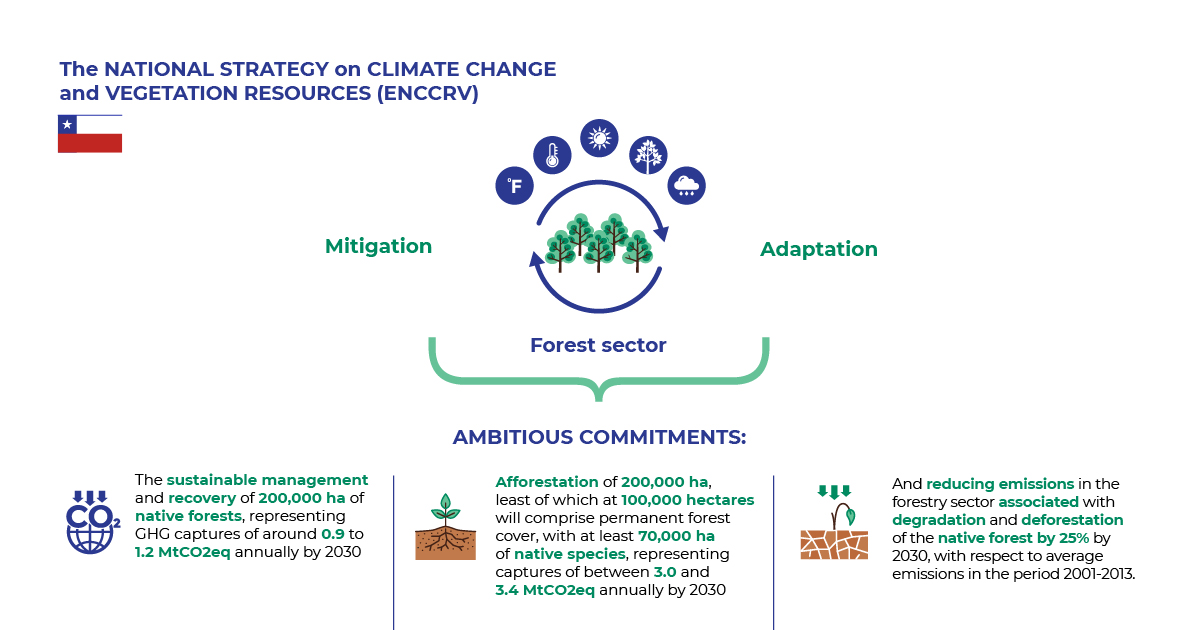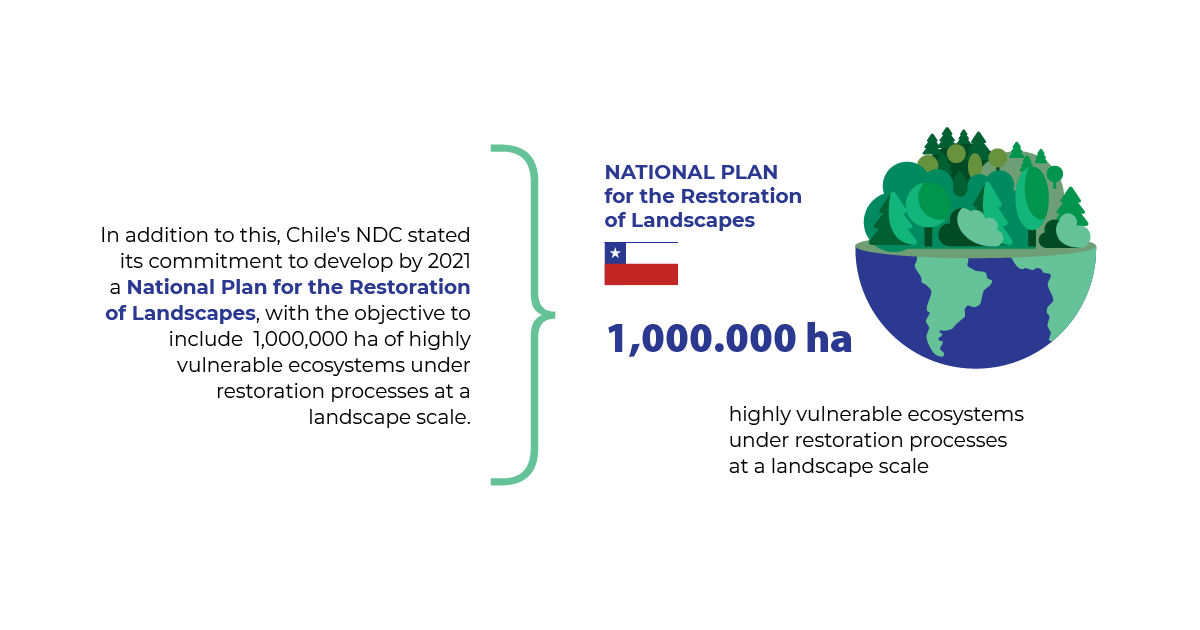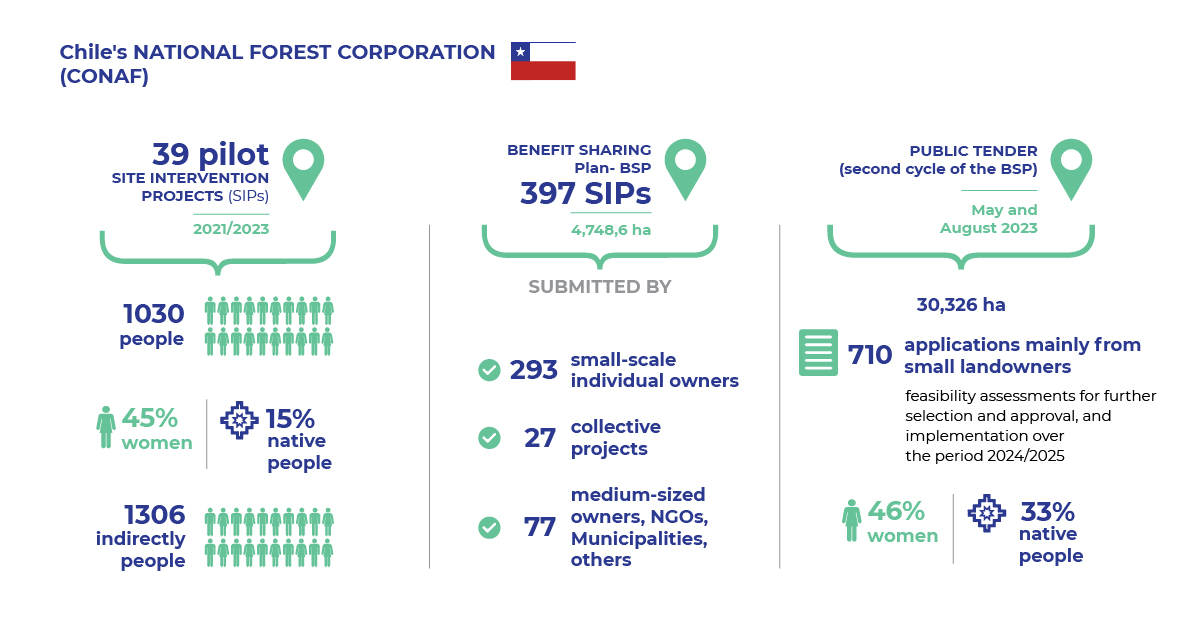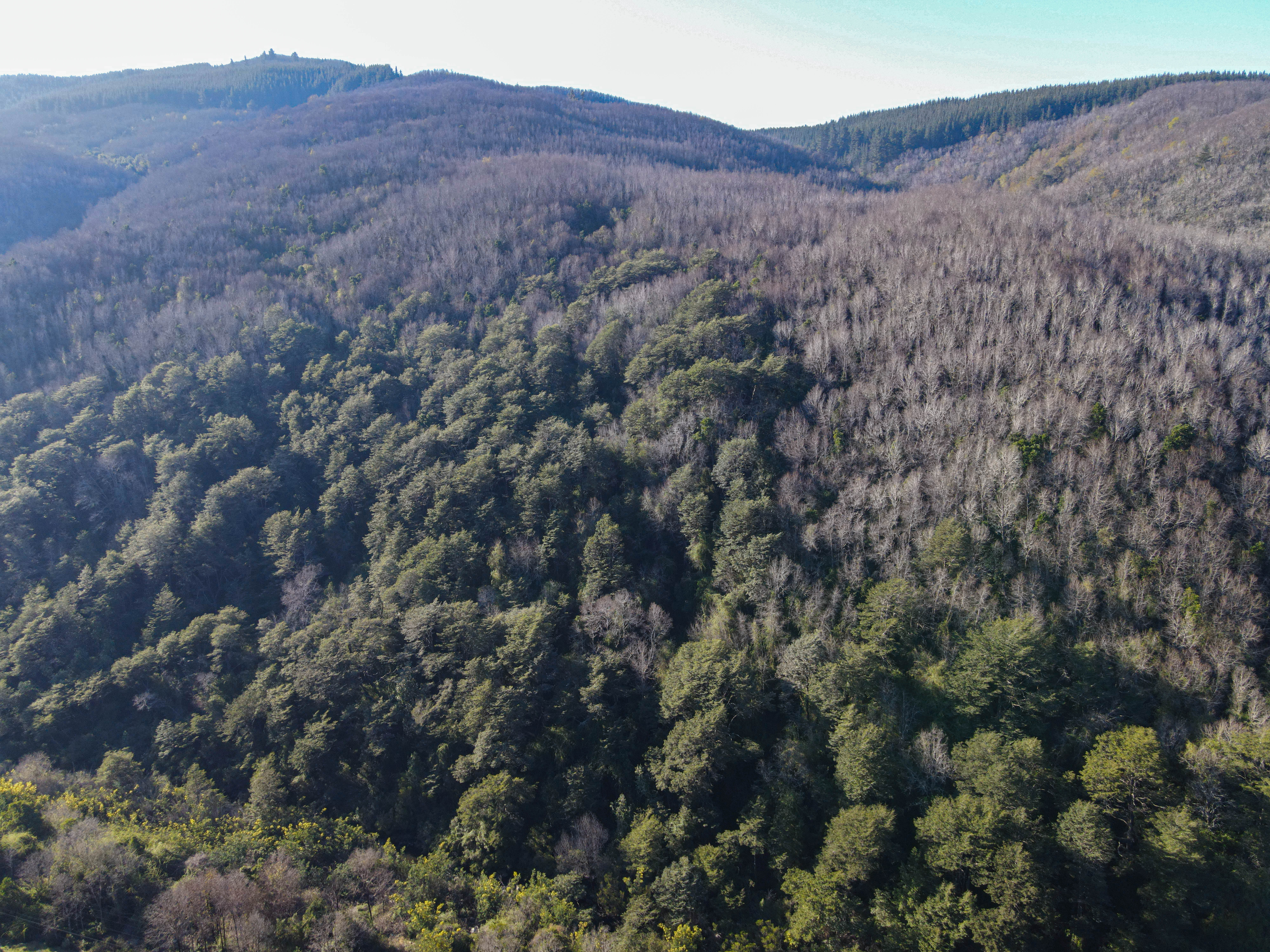Photo credit: CONAF/ Los Ruiles, Chile
Chile continues advancing and remains a front-runner on climate action and ambition. However, predictable, sustainable climate finance to ensure long-term effectiveness for the implementation of REDD+ actions is still a challenge for Chile and other countries. Chile is striving to overcome this challenge by accomplishing various recent steps.
Since 2013, Chile's National Forest Corporation (CONAF) has been leading REDD+ readiness and implementation, through its REDD+ strategy, the National Strategy on Climate Change and Vegetation Resources (ENCCRV). This is a public policy instrument geared at achieving both adaptation and mitigation objectives. The ENCCRV is in full implementation after the successful launch of its Benefit Sharing Plan (BSP) in the second half of 2022.
Earlier this year, with UN-REDD's technical backstopping, Chile submitted an updated Forest Emissions Reference level to the United Nations Framework Convention on Climate Change (UNFCCC) for technical assessment, which includes six additional regions and methodological improvements, in a stepwise approach toward national level accounting.
The ENCCRV seeks to reduce the country’s vulnerability to climate change and the risk of land degradation through the management of vegetation resources, with an aim to intervene in at least 264,000 hectares between 2017 and 2025, while reducing emissions from degradation and deforestation by 20 percent by 2025 from 2001-2013 levels.
With an estimated total budget of $433 million for a planning horizon of nine years, the ENCCRV plays a key role in the achievement of Chile’s sectoral commitments under its Nationally Determined Contribution (NDC). In 2020, Chile submitted a more ambitious NDC as outlined in the graphic below.

Furthermore, building on the ENCCRV, the NDC emphasizes the synergies between mitigation and adaptation actions in the forest sector and establishes ambitious commitments under an integration component.

In addition to this, Chile's NDC commits to developing a National Plan for the Restoration of Landscapes, with the objective of including 1,000,000 hectares of highly vulnerable ecosystems under restoration processes at a landscape scale.

REDD+ Results-based Financing and the ENCCRV´s Benefit Sharing Plan
After completing REDD+ readiness in collaboration with UN-REDD, and having satisfactorily reported on Emission Reduction (ER) results to the UNFCCC, Chile accessed Results-based Finance under the Green Climate Fund's (GCF) REDD+ pilot programme for the results achieved at the sub-national level in the period from 2014 to 2016 for a total of $63,607,552. Led by CONAF at central and regional levels, and implemented with the support of the Food and Agriculture Organization of the United Nations (FAO) as a GCF Accredited Entity (AE), the +Bosques project has been conceived under the umbrella of the ENCCRV to contribute directly to the NCD´s sectoral goals through the implementation of direct REDD+ measures of action (MDA) in six regions prone to the increased occurrence and magnitude of wildfires (Maule, Ñuble, Biobio, Araucanía, Los Rios, y Los Lagos), with a target area of 25,540 hectares.
Designed to support small-sized forest owners while delivering positive impacts at the landscape scale, the BSP is Chile´s mechanism for reinvesting REDD+ Results-based Finance (RBF) through non-monetary benefits for on the ground implementation, in the form of technical support, supplies and/or services for the execution of site intervention projects (SIPs). Over a six-year implementation period, +Bosques is supporting the operation of the BSP with a focus on six REDD+ measures of action: afforestation and revegetation, strengthening ecological restoration, post-fire forest restoration, forest fire prevention, forest management and strengthening the wood energy program.
From 2021 to 2023, CONAF led the implementation of 39 pilot SIPs and in August, 2022, successfully launched the first cycle of its BSP. Through a public tender, the first cycle of the BSP resulted in 397 SIPs. Moreover, CONAF launched a new public tender for a second cycle of the BSP between May and August, 2023, which received 710 applications mainly from small landowners.

Emerging lessons from Chile's REDD+ Benefit Sharing Plan
The ENCCRV established operational goals for each MDA, but no specific budget distribution across them was established. Rather, the BSP constitutes a mechanism to redistribute REDD+ RBF in which 20 percent of the funding is allocated to support the operation of the ENCCRV’s measurement, reporting and verification (MRV) and Safeguards Information Systems, and 80 percent is being reallocated amongst regions that contributed to achieving REDD+ results in the respective period for on-the-ground implementation. This funding is, in turn, redistributed in each region according to the following criteria: basal allocation, 50 percent (equity); performance-based allocation, 20 percent (efficiency); and buffer allocation, 10 percent (solidarity).
On the other hand, CONAF’s financial model for the ENCCRV established a budget for each MDA considering their respective operational goals for the period 2017-2025. Based on this, the first BSP was launched with a fixed average cost per MDA of $1,595 per hectare.
What lessons came up from this experience?
1. Noting territorial specificities and current national and global financial contexts, real costs have been higher: about 25 percent on average with an average real cost of $2,004 per hectare. This significant increase in operational and implementation costs not only poses a significant challenge to achieve the goals of the ENCCRV, but ultimately may hinder Chile´s ability to achieve its sectoral NDC targets.
2. The BSP is largely benefiting small-scale individuals, including Indigenous peoples and women. This is possible thanks to its inclusive and gender-responsive approach and to a robust environmental and social management system in place to ensure all relevant safeguards are addressed and respected. However, a large number of site intervention projects are not bigger than 0.5 hectares. Operation and implementation costs at this scale are much higher per hectare than larger scale interventions, and so innovative solutions that foster further public-private investments at scale through integrated landscape approaches, consistent with Chile's sectoral NDC commitments, are critical. The latter is particularly true to ensure successful forest fire prevention interventions, which is one of the ENCCRV’s MDAs with the least interest from applicants under the BSP since its launch.
3. During the first cycle of the SDB, it was up to applicants to choose which MDA they wished to apply to. As a result of a successful public tender, 63 percent of applications for SIPs focused on two out of six MDAs: restoration and sustainable management of forest resources.
4. High transaction costs associated with the operation of the BSP at a small-scale have resulted in a heavy workload at the regional level, which may not only exceed operational capacity for territorial execution, but has also triggered internal processes in CONAF to optimize the BSP and ensure its sustainability and efficiency over time.
Chile, with FAO support for the +Bosques project, is already working on a multi-pronged approach to ensure the long-term effectiveness and financial sustainability of the ENCCRV. This includes through long-term agreements with contractors implementing projects under the BSP which will allow fixed prices for cost-efficient, on-the-ground implementation. Similarly, collaboration opportunities to foster integrated landscape interventions and securing co-financing are already being harnessed, for instance with the Reforestemos Foundation, a flagship initiative based on crowdfunding donations to implement restoration and other management activities on the ground.

With the support of the UN-REDD Programme, through FAO and the United Nations Environment Programme (UNEP), CONAF will continue to revise and strengthen its finance strategy for the ENCCRV during the second half of 2023.
The revision of this finance strategy will build on lessons learned from early pilot project implementation and the first two cycles of the BSP, and will include:
- assessment of the cost-efficiency and effectiveness of MDAs, considering the scale at which measures are being implemented and NDC sectoral targets;
- assessment of remaining financial and implementation barriers;
- strategic assessment to maximize climate finance, considering the transformation potential and scalability of measures;
- updated finance objective and budget, including and overall revision of implementation and operation costs;
- analysis of alternative financing opportunities for MDAs with the lowest interest from applicants;
- and, identification and assessment of additional national and international, public and private financing sources and opportunities, including under voluntary carbon markets and Article 6 of the Paris Agreement.
National ambition, with various sectors collaborating in the field and bolstered by international cooperation, is making it possible to address the global challenge of climate change and its impacts on our planet. Despite these collective efforts, there remain several goals to be achieved both at the national and international levels to mobilize adequate and predictable finance. These objectives demand unwavering commitment and partnerships to pave the way for a sustainable future for all.
Authors


